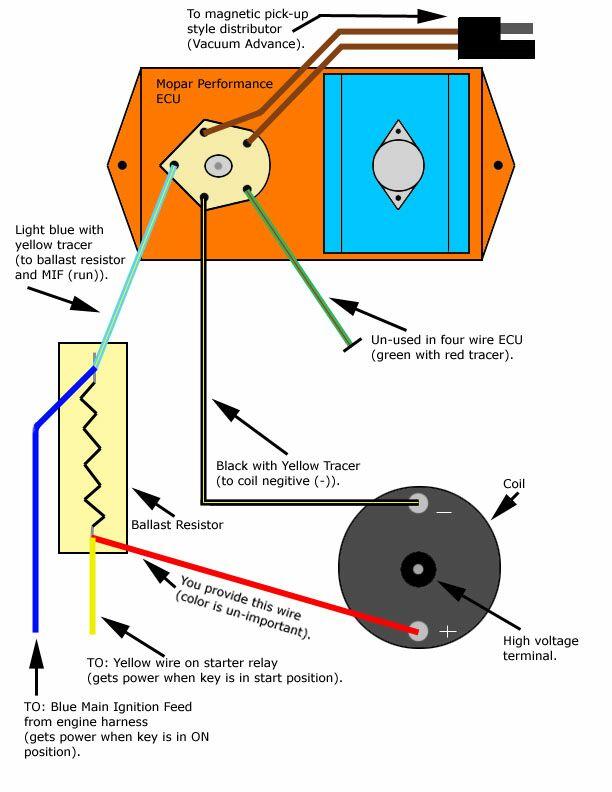Joshing
Joshing
Josh Tracy, Kirkland, WA, 1969 Plymouth Sport Satellite 318
I just switched to electronic ignition and it worked well for a while (though harder to start from the get go, which confused me since my understanding is that the spark is increased) as the starting go more and more difficult you guessed it, no starting now.
I have my DMM (a FLUKE) a handful of ballast resistors (resistances check between 0.9 and 1.4 ohms)two pickup coils whose resistance measure approximately 280 ohms mostly new cap and wires, dist. is good……and being the frugal student I am, I have three different junkyard ECU’s. I have checked all the wiring from the battery to the switch to the distributor to the coil, etc. all new wiring,good ground….I have done EVERYTHING I can think of and checked the wiring diagram against all the ones I have (they are all the same except for the two or four pronged ballast resistor) and the wiring is good (since it did run for a time), I get battery voltage in the accessory position and when I go to the “run” position, boom, it drop to 10.8 or so. Cranking obviously does about the same and as the ballast resistor heats up it drops a bit more. Is my ECU bad? I’ve tried em all with no change in voltage readings.How can I check one of these things? I put the points distributor back andre-wired the two prong resistor and she fired right up as if to say, “what are you waiting for?” So, wish I could pin down my loss in voltage and whythe electronic ignition won’t work but the dinosaur system will…..don’t let my wife be right!
Thanks for any help, Josh
Josh-
You somehow wired it wrong. I’m sure of that even from 3000 miles away! How do I know? The tip off is that you say the ballast resistor heats up during cranking. If wired correctly, the ballast resistor is completely out of the circuit – bypassed- by the ignition switch during cranking. There are a few ways to prove this. The technician’s way would be to take one probe of your trusty Fluke and clip it to the battery positive terminal, and the other to coil positive. During cranking, the voltage displayed should be under one volt. The pessimist’s way would be to pull the ballast resistor connector(assuming a 4-pin ECU is installed) – the car should still start (but will quit the second the key is released.) The car thief’s way is to run a small clip lead (jumper) from coil positive to battery pos. The car should start quickly, even by just jumping the starter relay – no key required! (Don’t run it too long this way, the ECU and coil will cook.)
As far as the total death, you need to follow basic trouble shooting procedures. If you made one wiring error, you might have made more, frying the ECU.
These systems are stone-axe reliable. You just screwed it up!
Rick



Comments are closed.